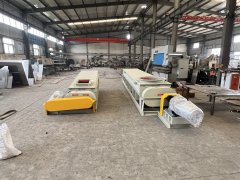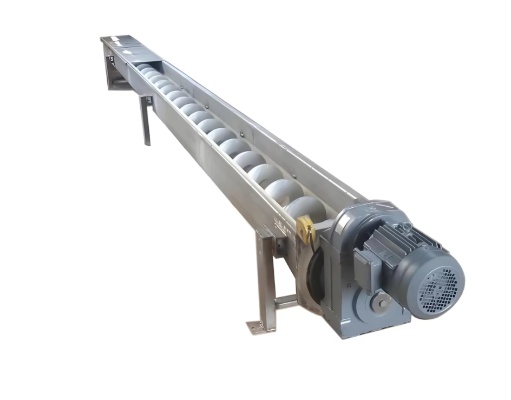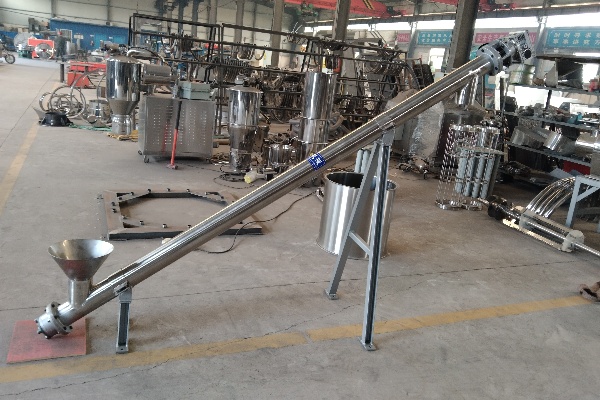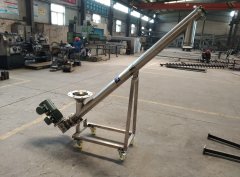Types of Twin Screw Conveyor
Monday July-28 2025 16:08:19
Twin Screw Conveyor is a common material handling tool in the industrial field. In practical applications, this equipment is mainly divided into two categories: shafted Twin Screw Conveyor and shaftless Twin Screw Conveyor. They have obvious differences in internal structure, applicable material range, material handling capacity and conveying distance. A typical large Twin Screw Conveyor may handle tens to hundreds of cubic meters of materials per hour, and can achieve horizontal or inclined conveying of several meters to tens of meters.
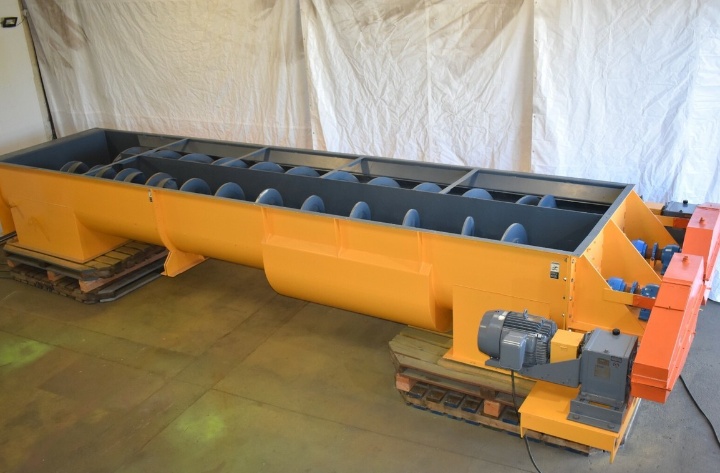
What are the types of Twin Screw Conveyors?
Twin Screw Conveyor has advantages in handling certain specific materials or achieving specific conveying needs due to its unique double screw design. It is mainly divided into two categories: shafted Twin Screw Conveyor and shaftless Twin Screw Conveyor. There are significant differences in structure, conveying capacity and conveying distance.
Twin Screw Conveyor with Shaft
The Twin Screw Conveyor with shaft is a traditional double-screw design. Each spiral blade is fixed on a central shaft, and the two spirals with shafts rotate in the same or opposite directions in parallel U-shaped grooves or tubular housings.
Structural features: Each spiral is supported by a solid central shaft, with high structural strength and stable operation. The two spirals are usually driven by synchronous gears or chains to ensure synchronous rotation and coordinated advancement of materials. The spiral blades are firmly connected to the central shaft, which is suitable for conveying various granular, powdery, and small bulk materials. However, due to the existence of the central shaft, for materials with strong viscosity, easy winding, and easy agglomeration, the material may be entangled on the shaft or form a "bridge" blockage at the shaft, making it difficult to clean.
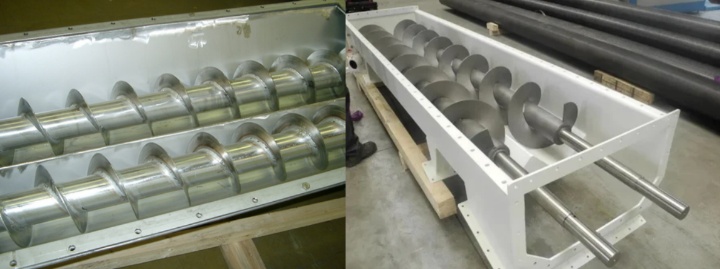
Conveying capacity: The Twin Screw Conveyor with shaft can achieve a large conveying capacity due to its stable structure, especially suitable for scenes that require continuous, stable, and large-scale conveying. Its conveying capacity mainly depends on the screw diameter, speed, and pitch.
Conveying distance: It can achieve a long horizontal or inclined conveying distance. Through segmented design and intermediate hanging bearing support, it can reach tens of meters or even longer. However, due to the existence of the central shaft and hanging bearing, the maintenance and replacement of the hanging bearing should be considered during long-distance conveying.
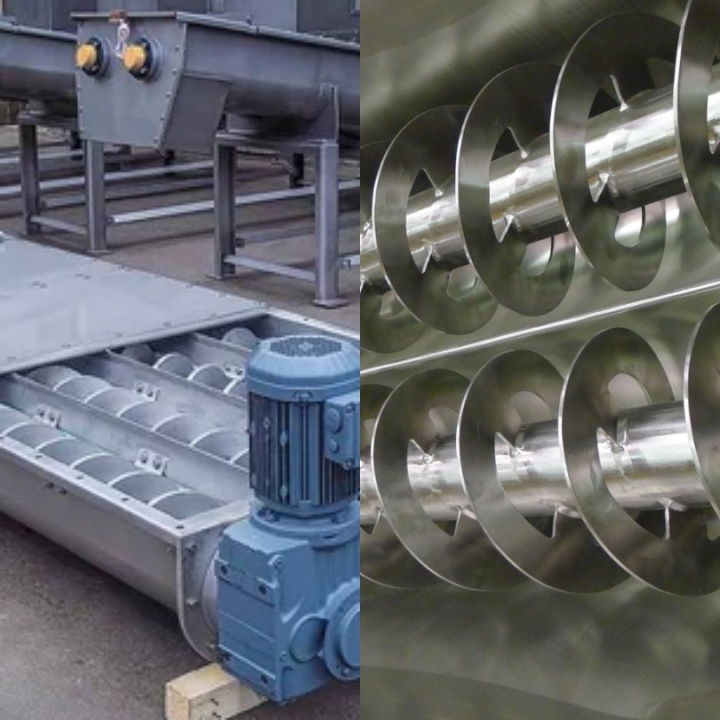
Shaftless Twin Screw Conveyor
The spiral blade of the shaftless Twin Screw Conveyor has no central shaft inside. It directly rotates in the U-shaped groove through two spiral blades (usually thicker solid spirals or spirals of special shapes) that mesh with each other or run in parallel to advance the material.
Structural features: The design without a central shaft makes the material almost unobstructed in the conveying trough, effectively solving the problem of easy blockage and winding of traditional shafted screw conveyors. The spiral blades are usually made of high-strength, wear-resistant materials and have a certain degree of flexibility, which can adapt to some irregularly shaped materials. Cleaning and maintenance are relatively simple because there is no winding point of the central shaft.
However, due to the lack of support from the central shaft, the rigidity of its spiral mainly depends on the strength of the blade itself and the support of the trough body, so higher requirements are placed on manufacturing accuracy and materials.
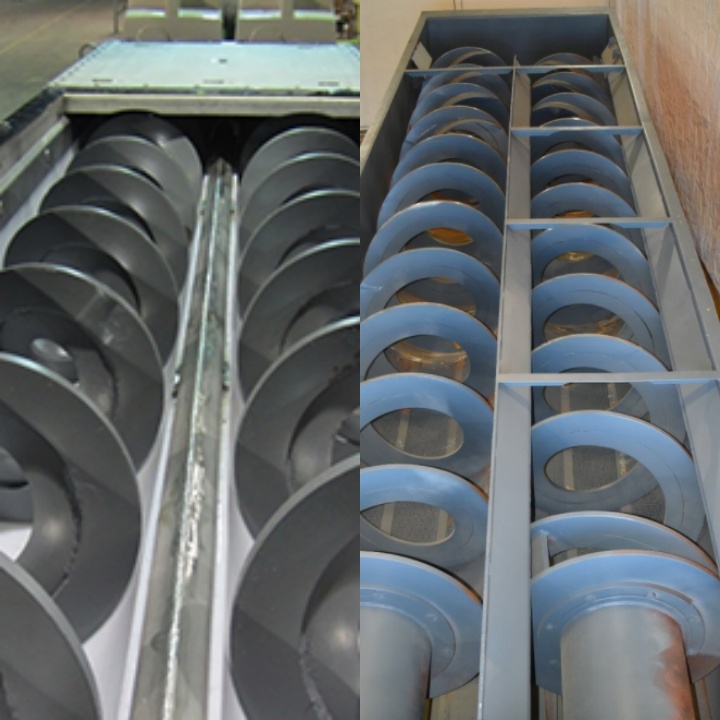
Conveying capacity: The shaftless Twin Screw Conveyor performs well in handling sticky and entangled materials. It can effectively convey such materials and avoid blockage, thus ensuring the continuity of conveying capacity. However, at the same screw diameter and speed, its theoretical conveying capacity may be slightly lower than that of the shafted type, especially when conveying regular and fluid materials. But for certain difficult-to-handle materials, its actual effective conveying capacity is higher.
Conveying distance: Since the shaftless screw lacks the overall support of the central shaft, its single-stage conveying distance is usually shorter than that of the shafted type. When conveying over long distances, more segments and intermediate support points are required, or a thicker screw design is adopted, which will increase costs and structural complexity. It is generally suitable for medium and short distance material conveying.

Basic Parameters of Twin Screw Conveyor
| Specification | Main technical performance | Drive device | Drive device | Weight(kg) | |||
| Diameter | Length(m) | Yield( t/h) | Rotating speed(min) | Reducer | Electric motor | ||
| Model | Speed ratio | Power(kw) | |||||
| U 200 | -10 | 9 | 60 | ZQ250 | 23.34 | 1.1 | 726 |
| U 200 | -20 | 9 | 60 | ZQ250 | 23.34 | 1.5 | 1258 |
| U 250 | -10 | 15.6 | 60 | ZQ250 | 23.34 | 2.2 | 960 |
| U 250 | -20 | 15.6 | 60 | ZQ250 | 23.34 | 3 | 1750 |
| U 300 | -10 | 21.2 | 60 | ZQ350 | 23.34 | 3 | 1373 |
| U 300 | -20 | 21.2 | 60 | ZQ350 | 23.34 | 4 | 2346 |
| U 400 | -10 | 51 | 60 | ZQ400 | 23.34 | 5.5 | 1911 |
| U 400 | -20 | 51 | 60 | ZQ500 | 23.34 | 11 | 2049 |
| U 500 | -10 | 87.5 | 60 | ZQ400 | 23.34 | 7.5 | 2381 |
| U 500 | -20 | 87.5 | 60 | ZQ650 | 23.34 | 18.5 | 5389 |
| U 600 | -10 | 134.2 | 45 | ZQ750 | 23.34 | 22 | 3880 |
| U 600 | -10 | 134.2 | 45 | ZQ850 | 23.34 | 55 | 7090 |
When choosing a shafted or shaftless Twin Screw Conveyor, the key is to fully understand the characteristics of the material to be conveyed. For materials with good fluidity and no entanglement, the shafted Twin Screw Conveyor provides stable conveying capacity and long conveying distance with relatively low cost. For materials with high viscosity, easy entanglement and high moisture content, the shaftless Twin Screw Conveyor is a better choice. Although its single-stage conveying distance may be limited, it can solve the blockage problem and ensure production continuity.
